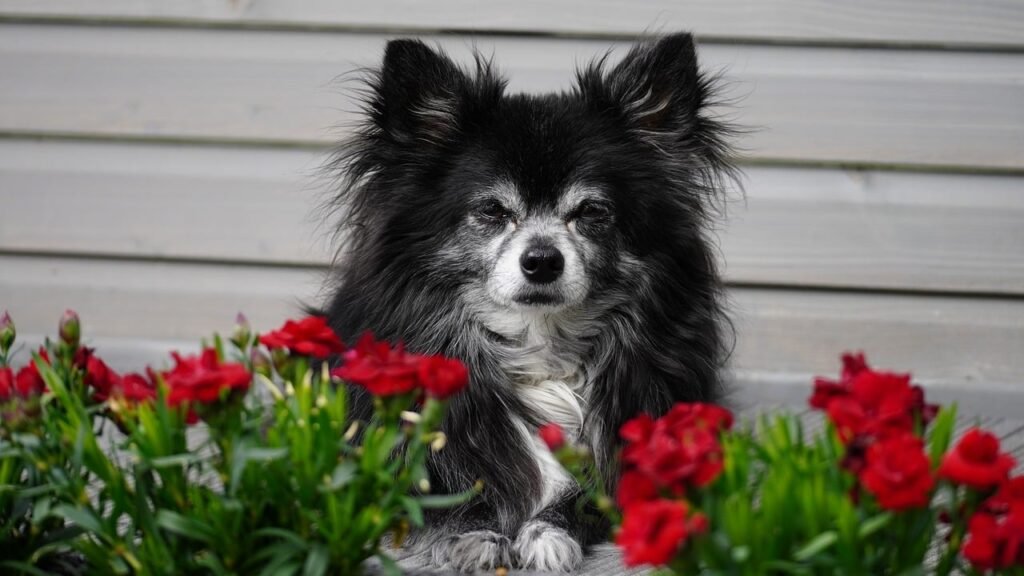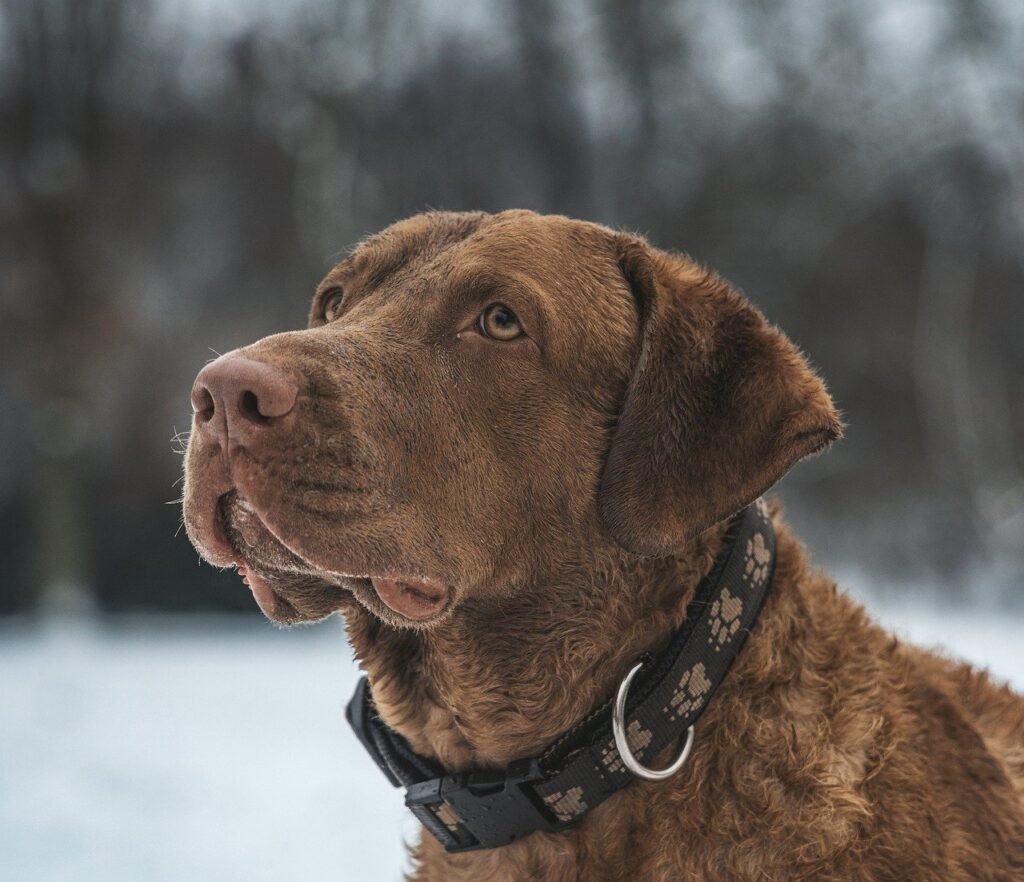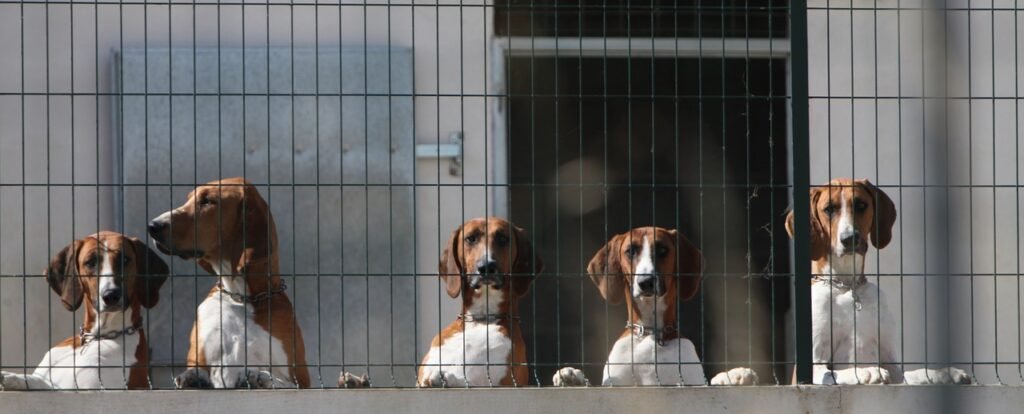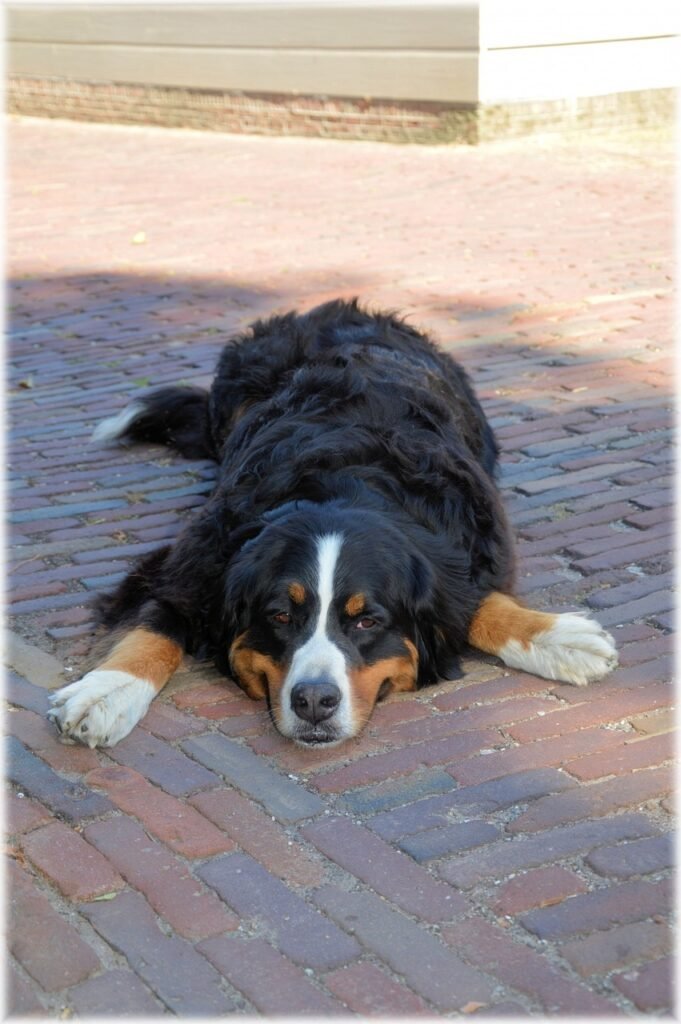Intro
Living with a dog suffering from Canine Dementia can be a challenging and heartbreaking experience. Coping with Cognitive Dysfunction Syndrome requires patience, understanding, and a commitment to providing the best care possible for your beloved pet.
As a senior dog owner myself, I have firsthand experience navigating the complexities of managing a dog’s cognitive decline. In this blog post, I will share insights, tips, and personal anecdotes to help you better understand and cope with the realities of Canine Dementia.
Understanding Canine Dementia and Its Impact

Navigating the journey of Canine Dementia, also known as Cognitive Dysfunction Syndrome, with my senior dog opened my eyes to the profound impact this condition can have on both pets and their owners. Initially, the signs were subtle—misplaced steps, a hesitancy to climb stairs, and moments of confusion. However, as the condition progressed, these signs became more pronounced, painting a clear picture of the challenges associated with cognitive decline in aging dogs.
Memory loss, disorientation, and changes in behavior and sleep patterns are hallmarks of Canine Dementia. Witnessing my once spirited companion falter in familiar environments was heart-wrenching. There were nights when the quiet was pierced by his disoriented whimpers, seeking comfort in the dark. It was during these moments that the emotional weight of Canine Dementia became palpable, not just as a concept, but as a lived reality that demanded resilience, compassion, and an unwavering commitment to care.
Adapting to these changes required a multifaceted approach. Simple adjustments, such as maintaining a consistent daily routine and introducing mentally stimulating toys, provided a sense of normalcy and engagement. Veterinary consultations became a cornerstone of our management strategy, offering professional insights into medications and supplements that could ease the symptoms.
The impact of Canine Dementia extends beyond the tangible symptoms. It challenges the dynamics of pet ownership, transforming routine care into a journey of adaptation, patience, and understanding. The condition serves as a poignant reminder of our pets’ vulnerability and the inevitable passage of time. Through this journey, the bond with my dog deepened, underscored by a mutual reliance and an unspoken understanding that, despite the changes, the essence of his spirit remained untouched by the encroaching shadows of cognitive decline.
The Emotional Toll on Owners and Pets Alike

Navigating the emotional landscape of Canine Dementia is both complex and deeply moving. My own journey with my aging companion taught me the true extent of this challenge. The initial realization that my dog’s quirky behaviors were symptoms of cognitive decline hit me with unexpected force, sending ripples of sadness through our daily lives. Each moment of confusion or forgotten routine felt like a small loss, a reminder of the inexorable nature of time.
Feelings of helplessness often crept in during the quiet hours of the night, watching him pace or whimper, lost in our once-familiar home. It was a stark reminder that Canine Dementia doesn’t just affect the pet; it carves deep emotional grooves into the lives of those who love them. Finding the strength to remain patient and compassionate, even when he seemed unreachable, became a daily practice. This condition, unforgiving as it is, taught me the depth of my own capacity for empathy and resilience.
Adapting to this new reality was a gradual process, filled with trial and error. Celebrating the good days became crucial, as did learning to accept the difficult ones with grace. Sharing my experiences with other pet owners facing similar challenges offered a semblance of solace, a reminder that I wasn’t navigating this path alone. These connections, formed in the shared language of loss and love, provided unexpected comfort and understanding.
Moreover, the journey underscored the importance of cherishing the present, of making every moment count. It became clear that despite the cognitive decline, the essence of my dog’s spirit remained. His moments of clarity, though fleeting, were precious gifts that reinforced our bond and underscored the unconditional love at the heart of our relationship. Thus, the emotional toll, while heavy, brought with it invaluable lessons in compassion, resilience, and the profound depth of the human-animal bond.
Practical Tips for Managing Daily Life

Adapting your home and daily routines can make a significant difference for a dog dealing with Canine Dementia. My experience taught me the importance of creating a stable environment that caters to my senior dog’s evolving needs. Establishing a consistent routine was the first step, aiding in reducing his anxiety and confusion. Simple practices, such as feeding and walking him at the same times each day, helped maintain a sense of normalcy in his life.
Visual cues became an unexpected ally in our battle against cognitive decline. I placed brightly colored mats near his food and water bowls, and his bed, to help him navigate our home more easily. These small modifications in our living space provided him with the extra guidance needed to move around with more confidence.
Safety was another major concern. I quickly learned that senior dogs with cognitive issues are more prone to accidents. To prevent injuries, I ensured that our home was as safe as possible, installing baby gates to limit access to stairs and securing loose rugs to prevent slips. Each adjustment, no matter how small, contributed to creating a secure environment where he could thrive despite his condition.
Engagement through physical and mental exercises also played a crucial role in managing his daily life. Regular, gentle walks and interactive toys kept his body and mind active, counteracting the symptoms of his cognitive dysfunction. I discovered that puzzle feeders were particularly effective, stimulating his brain while also slowing down his eating.
Reflecting on these adaptations, it’s clear that managing daily life with a dog suffering from Canine Dementia is a dynamic process, requiring ongoing adjustments and patience. Each small change aimed to support his well-being, making our journey together as comfortable and fulfilling as possible, despite the challenges posed by his condition.
The Role of Veterinary Care in Managing Canine Dementia

Partnering with a trusted veterinarian became a cornerstone in navigating the uncertain waters of Canine Dementia. Early in our journey, the realization that professional guidance was indispensable in managing my senior dog’s condition led me to seek a vet experienced in dealing with cognitive dysfunction in aging dogs. Their expertise offered not only a diagnosis but a pathway to understanding and addressing the nuances of his symptoms.
Customizing a care plan was the next critical step. My vet recommended a combination of medication to alleviate some of the anxiety and disorientation my dog was experiencing, alongside dietary supplements aimed at supporting brain health. These suggestions were not one-size-fits-all; they were carefully tailored to fit my dog’s specific needs and were adjusted over time as his condition evolved.
Monitoring progress and adjusting care strategies became a regular part of our routine. Follow-up appointments were more than just check-ins; they were opportunities to discuss any behavioral changes, evaluate the effectiveness of treatments, and make necessary adjustments. This ongoing dialogue with our vet ensured that as my dog’s condition changed, our approach to managing his Canine Dementia evolved as well, always prioritizing his comfort and quality of life.
In addition to medical treatments, our vet was a valuable resource for supportive care strategies. They introduced us to cognitive-enhancing activities and toys that stimulated my dog’s brain, helping to slow the progression of symptoms. It was clear that their role extended beyond mere medical interventions; they were an integral part of our support system, guiding us through each stage of the disease with compassion and understanding.
Reflecting on the impact of veterinary care in managing Canine Dementia, it’s evident that the right veterinary partner can profoundly influence the journey, transforming a challenging diagnosis into a manageable condition, with grace and dignity.
Navigating Dietary and Exercise Needs

Navigating the dietary and exercise needs of a senior dog with Canine Dementia has been an enlightening journey, filled with both challenges and triumphs. Upon receiving my dog’s diagnosis, the immediate shift towards optimizing his diet and exercise regimen became a top priority. The transformation began by integrating foods rich in antioxidants and omega-3 fatty acids into his meals, substances renowned for their brain-health benefits. Witnessing the subtle improvements in his demeanor and energy levels reaffirmed the importance of these nutritional adjustments.
Exploring the right balance of physical activity was equally crucial. Too little exercise would lead to stagnation, yet too much could overwhelm him. The solution came through short, gentle walks, tailored to match his waning stamina yet sufficient to keep his spirits high. These outings became cherished moments for both of us, offering not just physical stimulation but also precious bonding time.
Customization played a key role in this phase of care. As his needs evolved, so did our approach to his diet and exercise. Weekly assessments helped fine-tune his regimen, ensuring it aligned with his changing capabilities and preferences. This constant adaptation wasn’t easy but was necessary for his well-being.
Introducing mental exercises into our routine proved beneficial as well. Simple games and new toys sparked interest and engagement, helping to keep his cognitive functions as sharp as possible. These activities not only enriched his daily life but also brought moments of joy and satisfaction to us both, reminding me that, despite the progression of Canine Dementia, there were still opportunities to enhance his quality of life through thoughtful dietary and exercise modifications.
The Importance of Mental Stimulation

Providing mental stimulation for a senior dog grappling with Canine Dementia has been a transformative part of our journey together. Discovering ways to keep his mind engaged, I turned to puzzle toys, scent games, and short, interactive training sessions. These activities sparked a light in his eyes, reminding me of the vibrant dog he once was. Each successful interaction with a puzzle toy or a correctly followed command became a celebration, a small victory against the tide of cognitive decline.
Embarking on this path, I realized the profound effect that mental exercise had on his demeanor. On days filled with stimulating activities, his confusion seemed to lessen, and his moments of clarity became more frequent. It was as though we had found a way to momentarily push back the fog enveloping his mind. This observation was a beacon of hope, illuminating the importance of cognitive exercises not just for his well-being, but for our connection as well.
Introducing new toys and changing our routines kept the stimulation fresh and engaging. It was crucial to gauge his response to each activity, ensuring they were neither too challenging nor too simplistic. This delicate balance required patience and observation, adjusting our approach based on his reactions and enthusiasm. Witnessing his eagerness to engage, despite the occasional frustration, was heartening.
Incorporating social interactions with familiar faces provided additional layers of stimulation. These encounters, whether with human friends or canine companions, offered emotional uplift and a sense of normalcy. Watching him navigate these interactions, I saw glimpses of his enduring social nature, a reminder of the dog he remains at heart.
Through trial, error, and successes, mental stimulation has become a cornerstone of our daily regimen. It has not only enriched his quality of life but has also brought us closer, strengthening our bond in the face of Canine Dementia’s challenges.
Finding Support and Community

Embarking on the journey of caring for a dog with Canine Dementia can feel like navigating uncharted waters, often leaving caregivers feeling isolated in their experiences. However, the path becomes less daunting once you realize the abundance of support available. My own venture into seeking community brought an unexpected solace, transforming my perspective and approach to caregiving. Connecting with others through online forums dedicated to senior dog care provided not only practical advice but also a profound sense of understanding and camaraderie.
Discovering local support groups was another milestone in my journey. These meetings offered a physical space to share stories, tears, and laughter, creating a bond that only those who have walked similar paths can understand. It was during these gatherings that I found the strength to face the daily challenges of Canine Dementia with renewed vigor and optimism.
Professional guidance from pet care experts and veterinarians played a critical role as well. Their expertise and reassurances offered a beacon of hope amidst the uncertainties, reminding me that I wasn’t alone in this. They provided tailored advice that addressed not just the symptoms but also the emotional toll on both the pet and the caregiver.
Building this multifaceted support network became a crucial aspect of our journey, offering a blend of empathy, knowledge, and shared experiences. It underscored the importance of reaching out, of making those connections that remind us we’re part of a larger community, all united in our dedication to providing the best care for our aging companions.
Preparing for the Road Ahead

Embarking on this journey with a dog diagnosed with Canine Dementia requires foresight and readiness for the inevitable shifts in their health and behavior. My approach has been to adopt a proactive stance, anticipating the adjustments necessary to accommodate my senior dog’s changing needs. This preparation has included modifications to our home environment, like setting up ramps for easier access to favorite spots and increasing the comfort of his resting areas with additional supportive bedding. These small acts of anticipation have made a significant difference in his quality of life.
Consultations with our veterinarian were pivotal in developing a long-term care plan that was both realistic and sensitive to the progression of Canine Dementia. These discussions provided clarity and preparedness, covering everything from dietary adjustments to potential medical interventions aimed at managing symptoms. The process of planning for future changes, while sometimes daunting, has brought a sense of control and peace, knowing that we are doing everything in our power to ensure his comfort.
Through this experience, I’ve learned the importance of being adaptable and open to changing our routine and living environment as needed. Whether it’s introducing new support tools or arranging for specialized care, each decision is made with his best interests at heart. Preparing for the road ahead with a pet suffering from Canine Dementia is an ongoing process, one that requires love, patience, and the willingness to face each day as it comes, armed with knowledge and a deep commitment to their wellbeing.
Celebrating the Good Days

Amidst the challenges of Canine Dementia, it’s the moments of clarity and joy that shine the brightest. Each wagging tail, each moment of recognition, feels like a triumph, a reminder of the enduring bond between us. Creating new memories becomes essential, finding simple ways to enjoy each other’s company, whether through a gentle walk in the park or a quiet evening spent together.
My dog’s enthusiastic response to his favorite toy or the comfort he finds in a cozy cuddle session underscores the importance of savoring these good days. These instances of connection and happiness do not just offer a respite from the difficulties of managing cognitive decline; they reinforce the profound, unconditional love that defines our relationship. Celebrating these victories, no matter how small, fills our journey with light and love, reminding us to treasure the present and the unwavering companionship we share.
